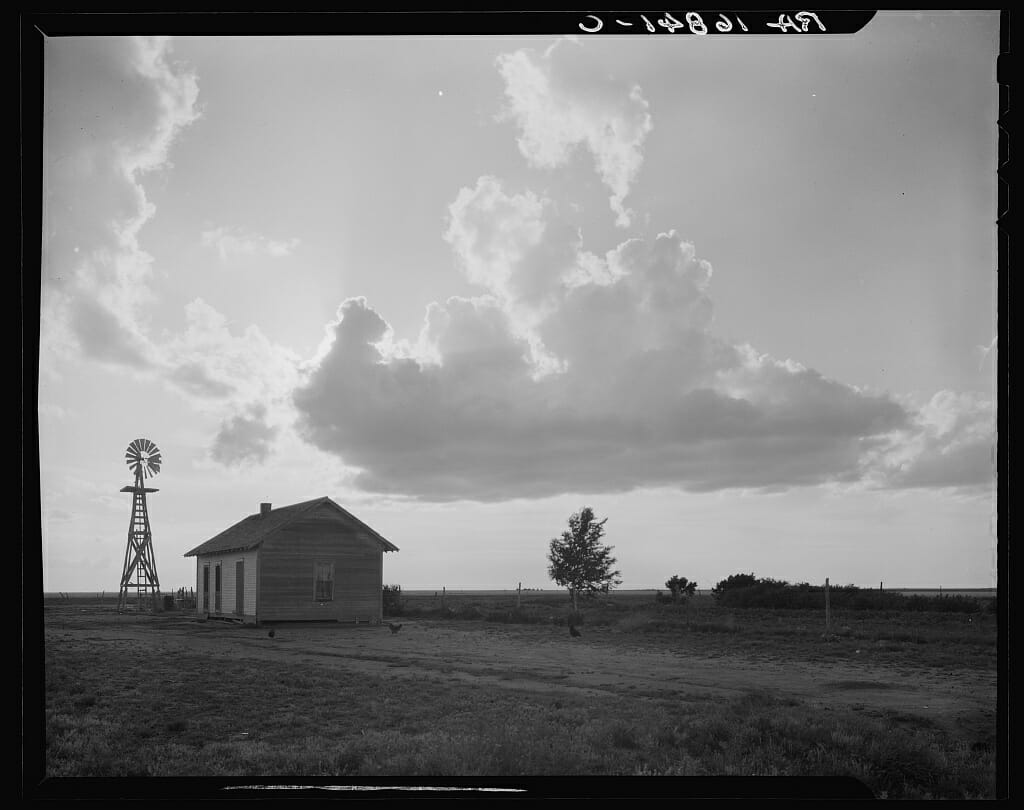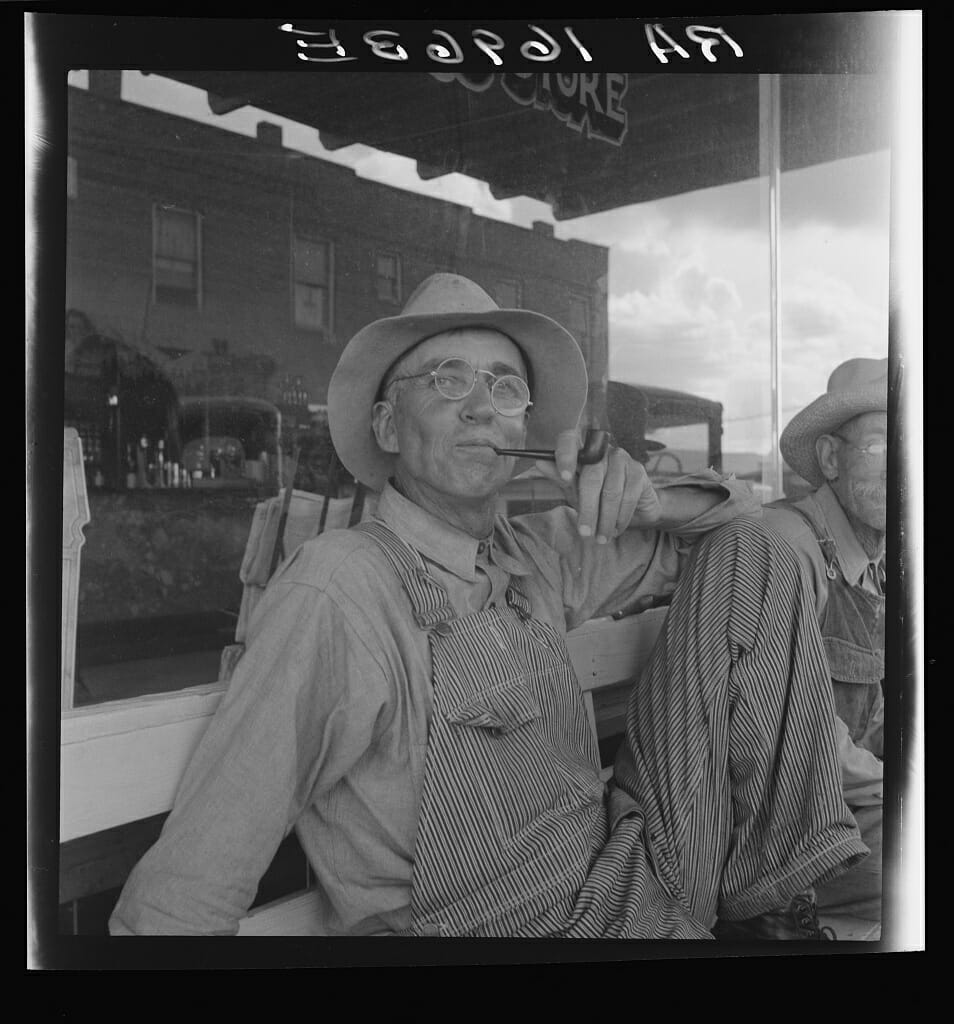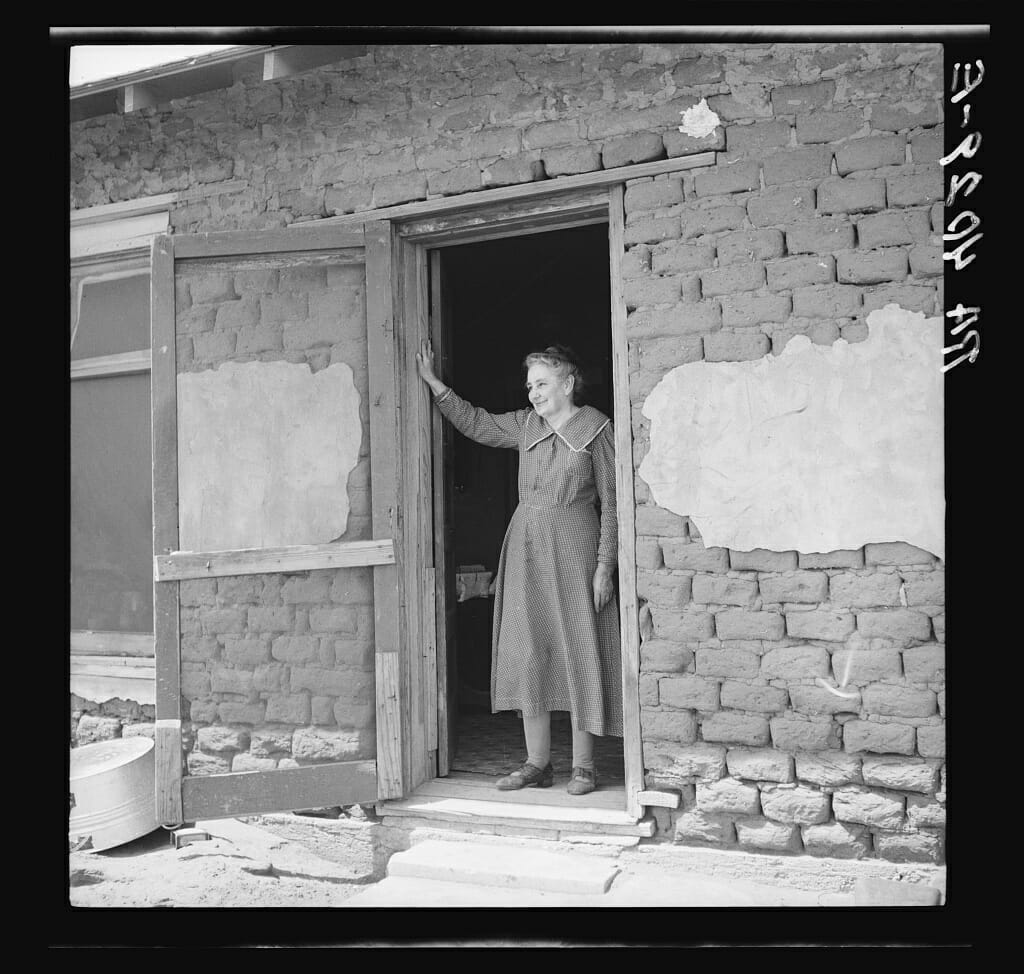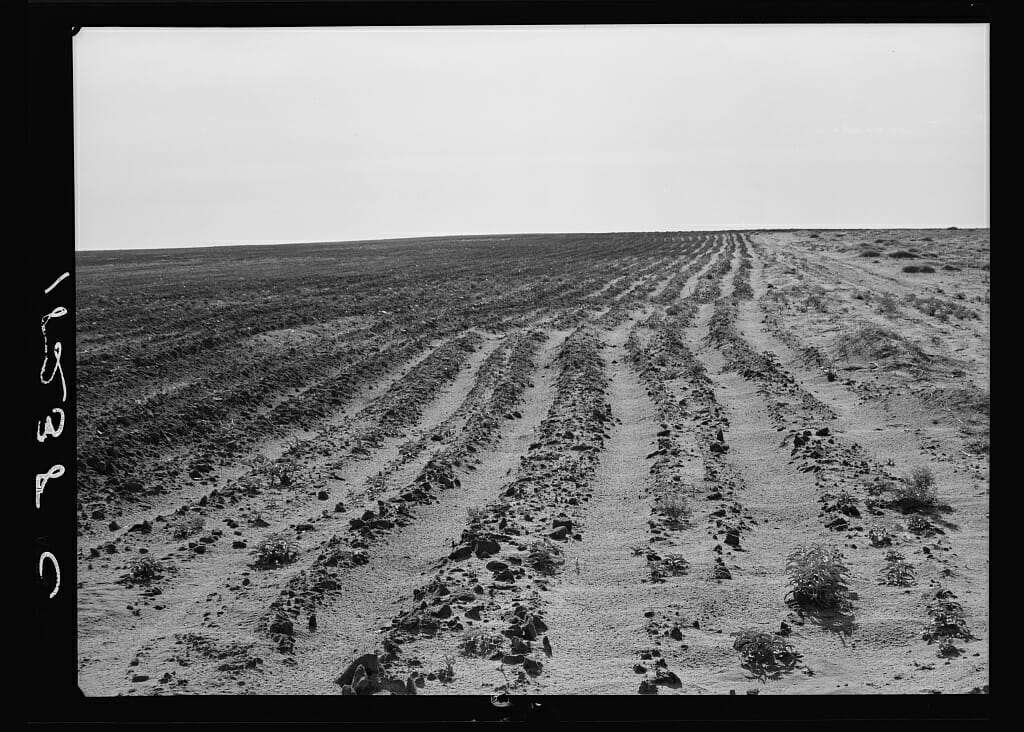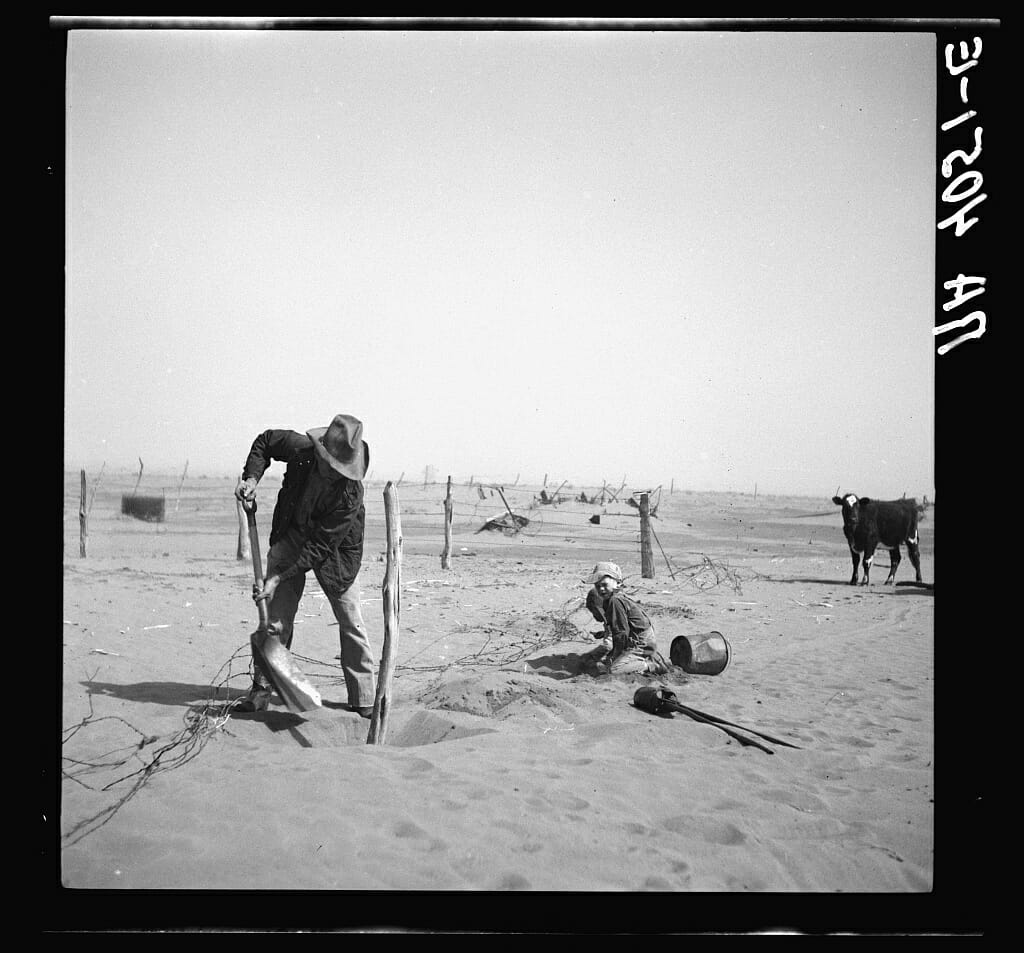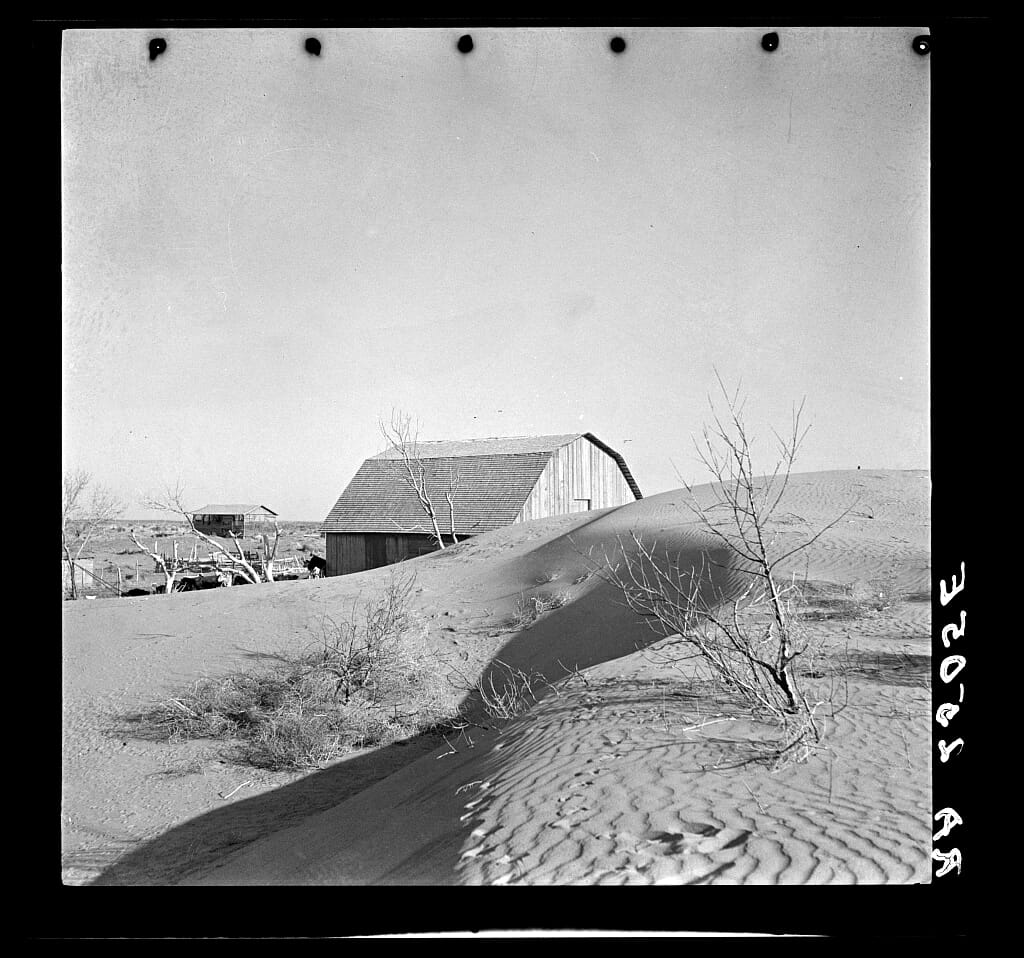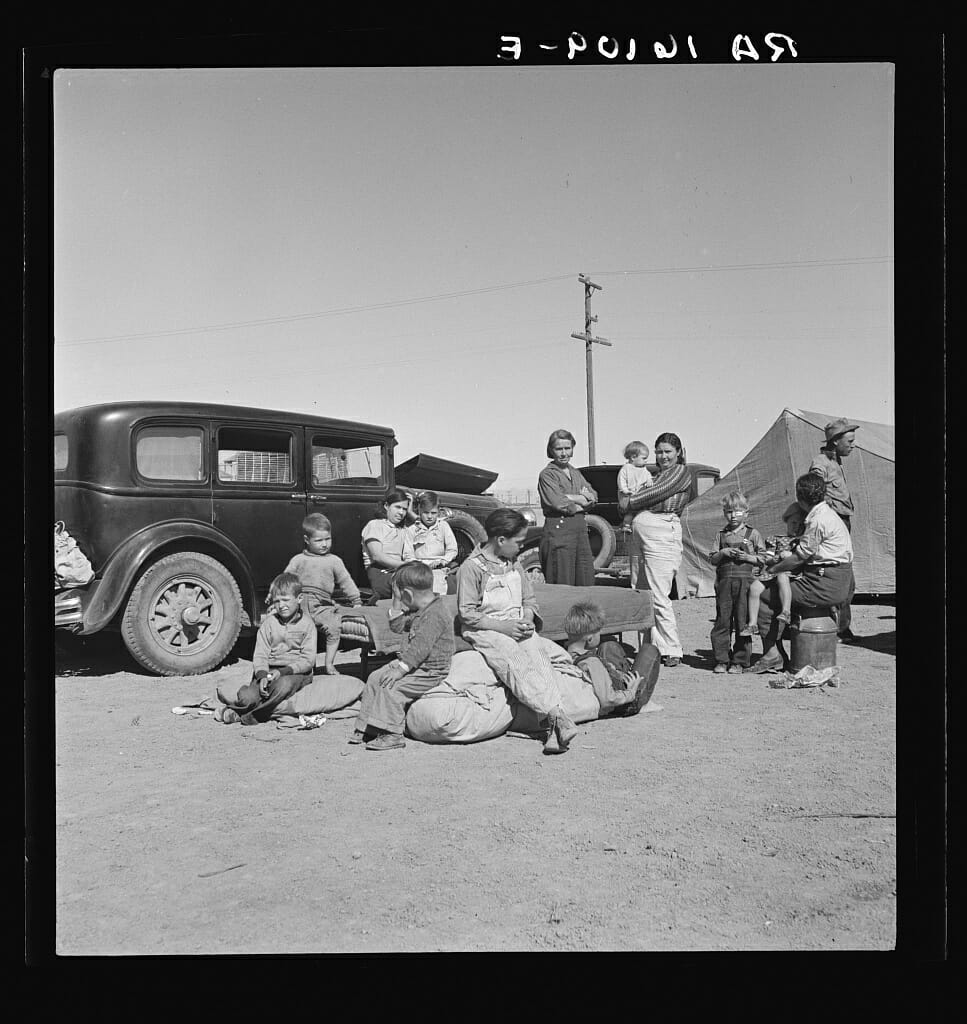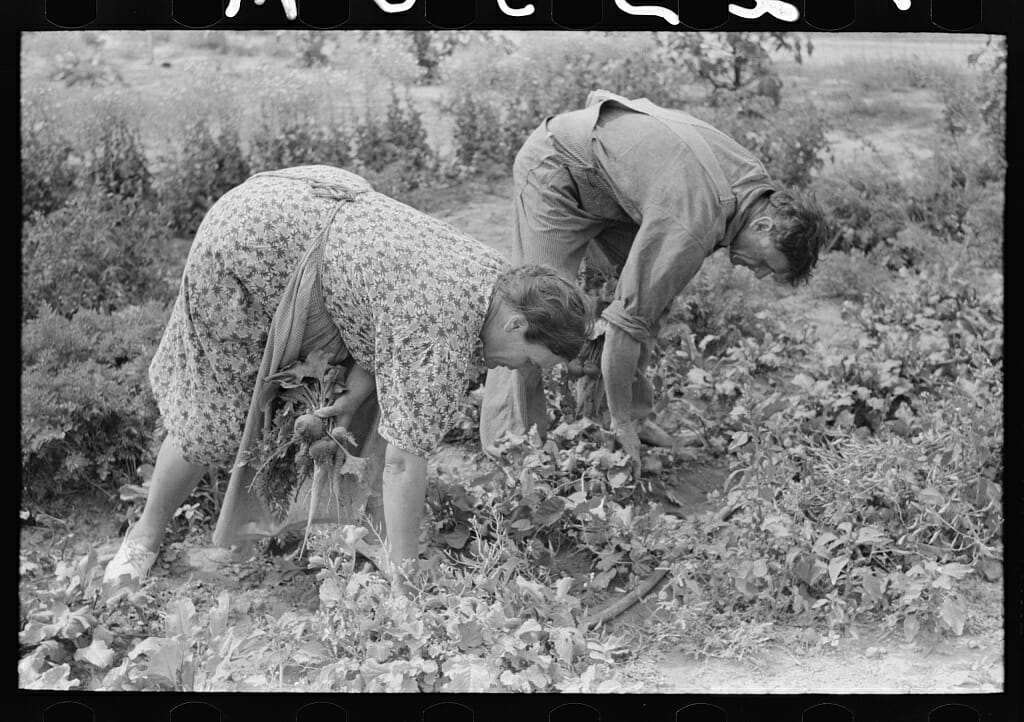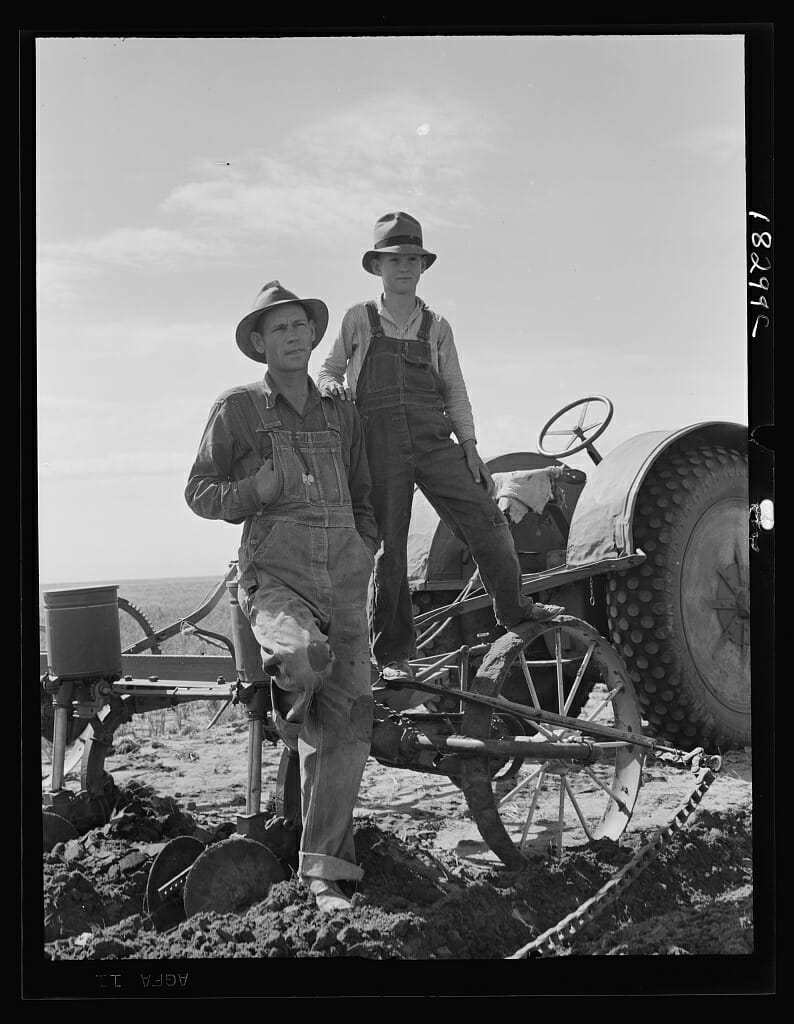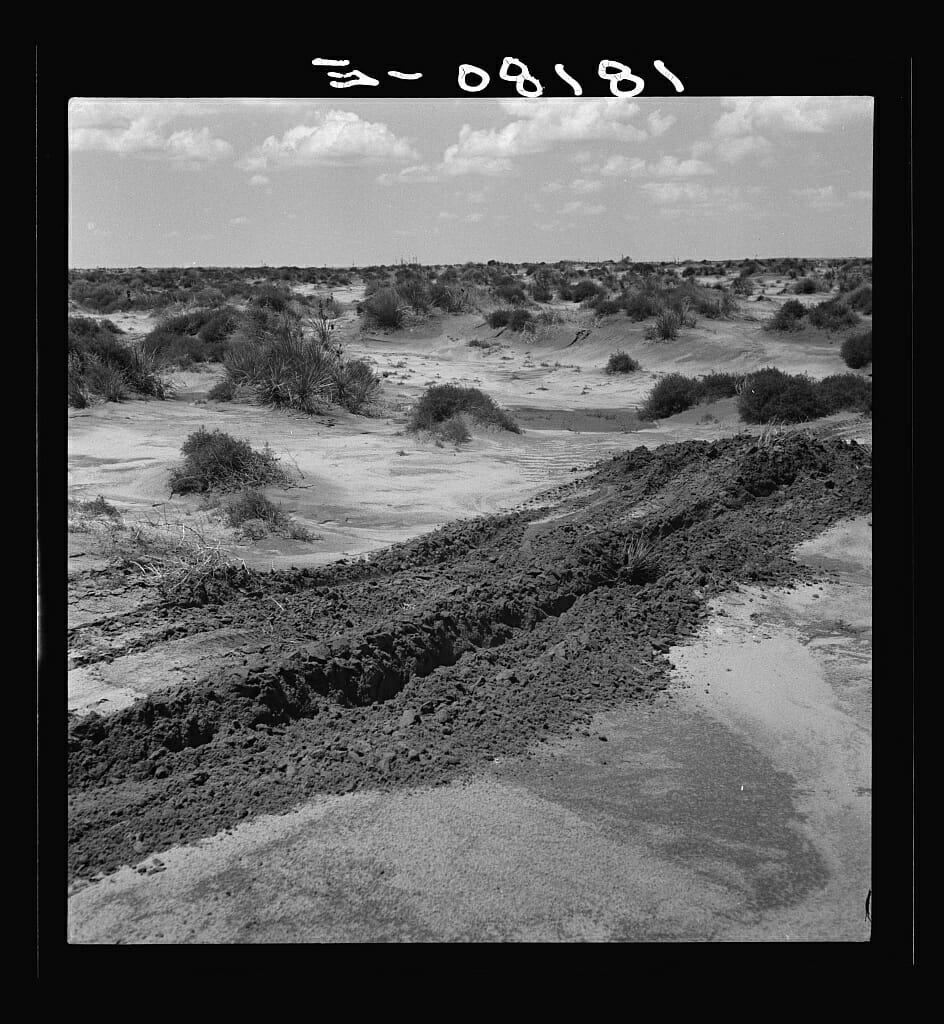A look back at the Dust Bowl, when severe dust storms blew across the prairies of the United States, causing a mass migration of farmers.

We spent some time browsing the Library of Congress, looking at photos from the Dust Bowl. In the 1930s, overuse of land combined with years of drought combined to create massive dust storms that would literally block out the sun. Dust from these massive weather events, also known as “black blizzards,” reached as far as New York City and Washington, D.C.
It also caused a mass migration of farmers, as many fled the arid plains for California, as chronicled in the John Steinbeck novel “The Grapes of Wrath.”
[mf_h5 align=”left” transform=”uppercase”] A barren West Texas family farm affected by the drought, ca. June, 1937.[/mf_h5]
[mf_h5 align=”left” transform=”uppercase”]Dust Bowl farmers of West Texas in Town, ca. June, 1937.[/mf_h5]
[mf_h5 align=”left” transform=”uppercase”]One of the pioneer women of the Oklahoma Panhandle Dust Bowl, ca. April, 1936.[/mf_h5]
[mf_h5 align=”left” transform=”uppercase”]Furrowing against the wind to check the drift of sand during the Dust Bowl, north of Dalhart, Texas, ca. June, 1938.[/mf_h5]
[mf_h5 align=”left” transform=”uppercase”]Dust Bowl farmer raising fence to keep it from being buried under drifting sand in Cimarron, Oklahoma, ca. 1936.[/mf_h5]
[mf_h5 align=”left” transform=”uppercase”]The winds of the Dust Bowl have piled up large drifts of soil against this farmer’s barn near Liberal, Kansas, ca. March, 1936.[/mf_h5]
[mf_h5 align=”left” transform=”uppercase”]Dust Bowl refugee from Chickasaw, Oklahoma in Imperial Valley, California. “Black Sunday, 1934, that was the awfullest dust we ever did see,” ca. 1937.[/mf_h5]
[mf_h5 align=”left” transform=”uppercase”]Four families, three of them related with fifteen children, from the Dust Bowl in Texas in an overnight roadside camp near Calipatria, California, ca. March, 1937.[/mf_h5]
[mf_h5 align=”left” transform=”uppercase”]Auto camp north of Calipatria, California. Approximately eight families from the Dust Bowl are camped here. They pay fifty cents a week. The only work available now is agricultural labor, ca. March, 1937.[/mf_h5]
[mf_h5 align=”left” transform=”uppercase”]Mr. and Mrs. Schoenfeldt pulling beets from their tile garden, Sheridan County, Kansas. Tile Gardens are a part of the FSA (Farm Security Administration) in the former Dust Bowl, ca. August, 1939.[/mf_h5]
[mf_h5 align=”left” transform=”uppercase”]Dust Bowl farmer with tractor and son near Cland, New Mexico, ca. June, 1938.[/mf_h5]
[mf_h5 align=”left” transform=”uppercase”]Dr. Tugwell and a farmer of the Dust Bowl area in Texas Panhandle, ca. 1936.[/mf_h5]
[mf_h5 align=”left” transform=”uppercase”]Leveling hummocks in the Dust Bowl. Coldwater District, thirty miles north of Dalhart, Texax, ca. June, 1938.[/mf_h5]
Source: Library of Congress
